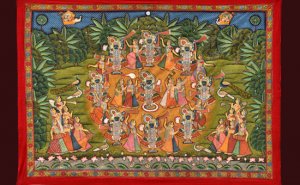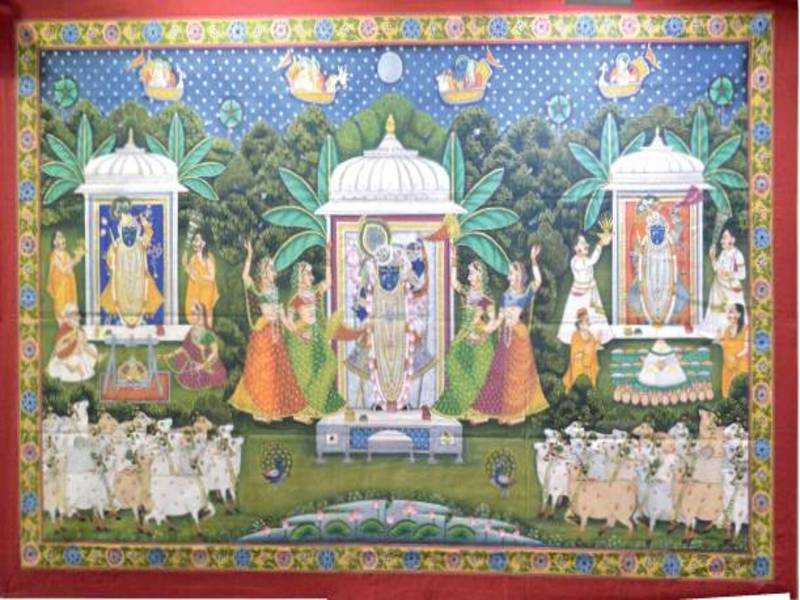Pichwai Paintings
Pichwai Painting or ‘Pichvai’ Painting is an art form that has its roots in Sanskrit pich or ‘behind’, vai or ‘textile hanging.’ This art has constantly played an important role in Indian society and when it comes to traditional art forms, there are so many things that one can explore.
Pichvai is such a traditional artwork that depicts the true nature of art form in India as well as acts as a good source of history.
The very origin of this artwork was said to have started in Nathdwara in Rajasthan. It is a stunning art form that is about 400 years old which was depicting the life of Lord Krishna. With its roots in the miniature painting tradition, the pichwai painting style emerged in the 17th century.
The story that revolves around Pichwai paintings is a beautiful one, which depicts true power and strength. It was created as a backdrop in the temples and is also considered as one of the important offerings to god along with food, garments, jewelry and so much more.
It is considered to be a ‘not-so-famous’ art which is found not only in temples but also in houses across the world.
Radha Krishna pichwai painting

Creating a Pichwai can take several months and can be very tough for it requires an immense amount of skills. The painting is traditionally made on a starched cloth, with colours derived from stones and minerals, (gold can be sometimes used, to give it a richer look).
In pichwai, even the smallest details have to be made with precision. A pichwai can also be printed using hand blocks or woven embroidery, dabka or zardozi work.
We all should understand that art is something that helps preserve our culture, values, traditions, and history. In a way, it helps us recognize the true beauty of our country and also reflects how others see our country as.



